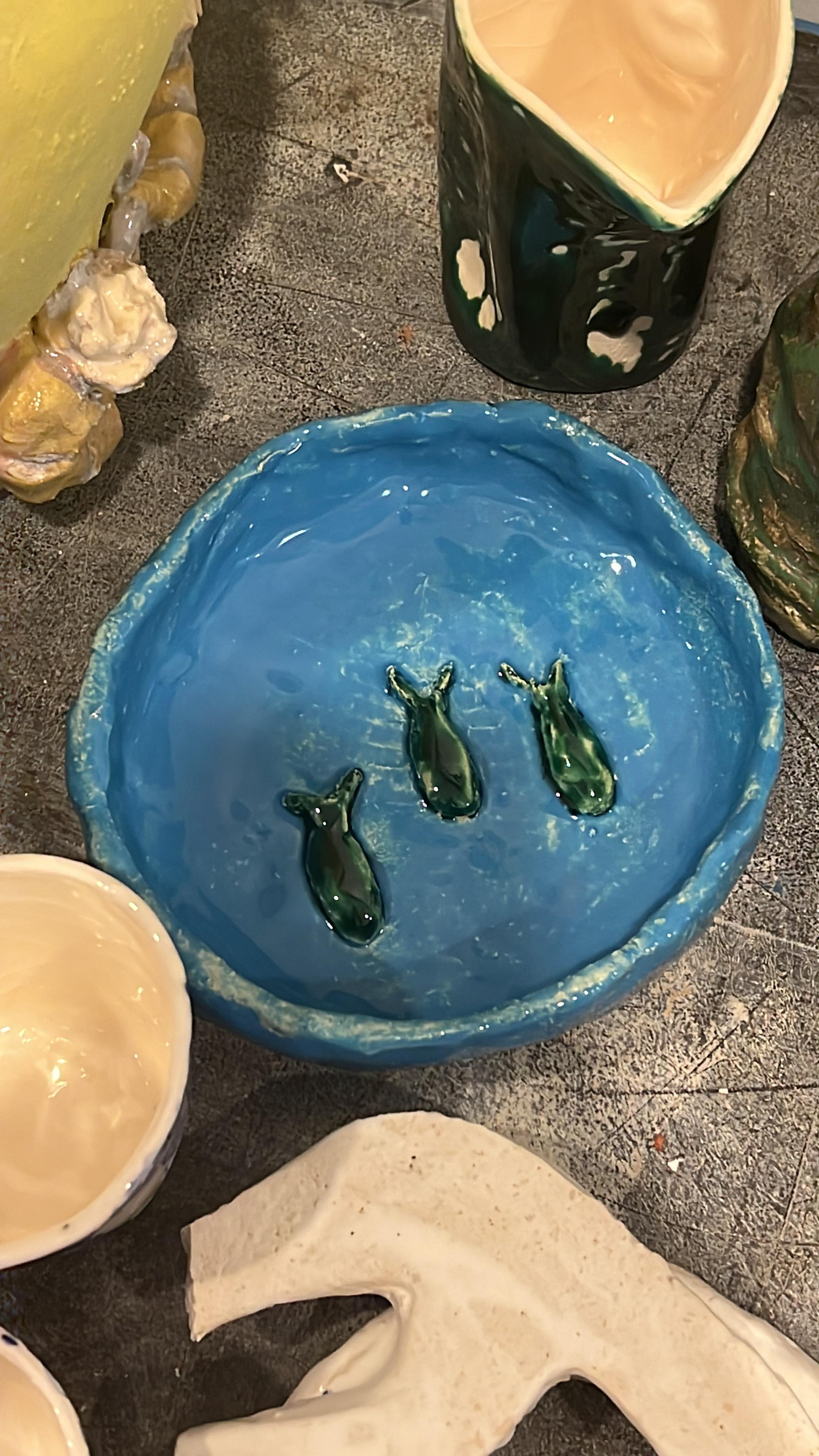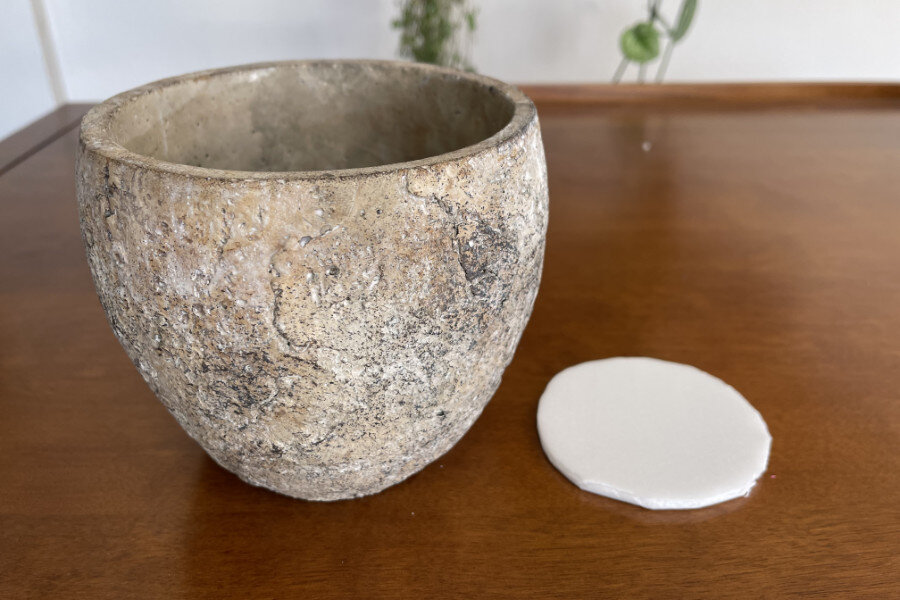Crafting with clay leads to stunning pots, but they need protection from water. To ensure their longevity, waterproofing is essential.
Making ceramic pots waterproof may seem daunting, but with the right approach, it’s a task anyone can tackle. This process not only preserves your pottery but also expands its use to include outdoor environments without the worry of damage from the elements.
Whether you’re a seasoned potter or a DIY enthusiast, learning to seal ceramics is a valuable skill that enhances the durability and functionality of your creations. Join us as we delve into the simple yet effective techniques to safeguard your ceramic pots against water, ensuring they stand the test of time and continue to beautify any space they adorn.
The Essentials Of Ceramic Pot Waterproofing

Discovering the right way to waterproof ceramic pots is a game changer for gardeners and decorators alike. Keeping plants healthy and maintaining the beauty of ceramic designs is essential. Let’s dive into the steps to ensure your ceramic pots stand the test of time and the elements.
Why Waterproofing Is Crucial
Protects from leaks. Waterproofing keeps water inside. This prevents damage to surfaces underneath. Extends pot life. It also helps pots last longer. Without waterproofing, pots can crack.
Materials Needed For The Process
- Sealant (specific to ceramics)
- Clean cloth
- Soft brush or sponge
- Rubber gloves
- Well-ventilated area
Choose the right sealant. Check it’s for ceramics. Gather all materials before starting.

Credit: m.youtube.com
Types Of Ceramic Pots
Exploring the Types of Ceramic Pots reveals a world of variety. Each type has unique features that affect its waterproof qualities. Let’s dive into the differences between handcrafted and machine-made pots and understand porosity variations.
Handcrafted Vs. Machine-made
Handcrafted ceramic pots boast uniqueness. Artisans shape these pots by hand. This process makes each pot one-of-a-kind. They often have rich textures and deep colors.
Machine-made ceramic pots, on the other hand, offer consistency. Factories use molds to make these pots. They tend to have uniform shapes and smooth finishes.
- Handcrafted pots might show slight imperfections. These add to their charm.
- Machine-made pots usually have a more polished look.
Porosity Variations
Ceramic pots differ in porosity. Porosity means how many small holes a pot has. These holes affect how water moves through the pot.
| Type of Pot | Porosity Level |
|---|---|
| Handcrafted | High |
| Machine-Made | Low to Medium |
High porosity pots are great for plants that like dry soil. They let water and air move freely. Low porosity pots keep moisture longer. They suit plants that need more water.
Understanding these differences helps in making the right choice. Whether you prefer the unique look of handcrafted pots or the sleek design of machine-made ones, knowing their porosity can guide you in making them waterproof effectively.
Choosing The Right Sealant
Sealants protect ceramic pots from water and weather. Picking the right one is key. It ensures durability and beauty.
Types of Sealants
Types Of Sealants
Different sealants offer unique benefits. They fit various needs.
- Acrylic: Easy to apply and dries quickly.
- Polyurethane: Strong and long-lasting.
- Epoxy: Seals and bonds for extra strength.
- Silicone: Flexible and water-resistant.
Pros and Cons of Different Sealants
Pros And Cons Of Different Sealants
Each sealant has its upsides and downsides. Let’s compare them.
| Sealant Type | Pros | Cons |
|---|---|---|
| Acrylic | Quick dry, easy use | Less durable |
| Polyurethane | Very durable | Longer dry time |
| Epoxy | Bonds well | Hard to remove |
| Silicone | Flexible seal | Not paint-friendly |

Credit: www.reddit.com
Preparation Steps Before Sealing
Creating a waterproof barrier for ceramic pots starts with preparation. Proper steps ensure a lasting seal. Let’s explore these essential tasks.
Cleaning the Ceramic Surface
Cleaning The Ceramic Surface
Begin with a clean surface. Any dirt affects the sealant’s adhesion. Follow these steps:
- Wipe the pot with a damp cloth to remove dust.
- Use mild soap and water for stains.
- Rinse thoroughly to avoid soap residue.
Drying and Surface Inspection
Drying And Surface Inspection
After cleaning, dry the pot completely. Use these tips:
- Leave the pot to air dry for several hours.
- Check for a dry surface before proceeding.
Inspect the surface for cracks or chips. Fix any imperfections before sealing.
Application Techniques For Sealants
Making ceramic pots waterproof is important. We use special sealants for this. Let’s look at how to apply these sealants right.
Brush Vs. Spray Methods
There are two main ways to apply sealants: brush and spray. Each has its pros and cons.
- Brush method: This method gives you more control. It’s good for small pots. But, it can be slow and leave brush marks.
- Spray method: This is faster and gives an even coat. Best for large pots. But, it needs good ventilation and can be messy.
Tips For Even Coating
For a good waterproof seal, an even coating is key. Here are some tips:
- Work in a well-lit area: See what you’re doing clearly.
- Do thin layers: Better than one thick layer. Let each layer dry first.
- Overlap your strokes: Whether spraying or brushing, overlap each pass for full coverage.
- Rotate the pot: Get all sides. Use a turntable if you can.
- Check for missed spots: Look at the pot from different angles. Touch up as needed.
Remember, practice makes perfect. Don’t rush. Take your time for best results.

Credit: www.greenhousestudio.co
Drying And Curing Process
Sealing your ceramic pots is a crucial step. Proper drying and curing ensure they become waterproof. This stage requires patience and attention to detail. Understanding the ideal conditions and timeframes for curing will help achieve the best results.
Ideal Conditions for Drying
Ideal Conditions For Drying
Drying ceramic pots needs the right environment. Airflow and temperature are key. Too much humidity can cause issues. The area should be dry and well-ventilated. Avoid direct sunlight and drafts.
- Stable temperatures between 50-70°F work best.
- Keep the area consistent without sudden changes.
Timeframes for Curing
Timeframes For Curing
Curing times vary based on size and thickness. Smaller pots may take only a few days. Larger or thicker ones could need weeks. Always allow pots to cure fully before testing waterproofness.
| Pot Size | Minimum Curing Time |
|---|---|
| Small pots | 72 hours |
| Medium pots | 7 days |
| Large pots | 2-3 weeks |
Check pots after minimum time. If still damp, extend the curing period.
Maintenance Tips For Waterproofed Pots
Making ceramic pots waterproof is smart. But, keeping them that way needs care. Let’s look at some easy tips. These will help your pots stay waterproof longer.
Regular Check-ups
It’s key to check your pots often. Look for cracks or chips. Water can seep in through these. Small problems can grow. So, fix any damage you find quickly.
- Look at your pots every month.
- Touch them. Feel for rough spots.
- See any damage? Fix it right away.
Cleaning And Re-sealing Intervals
Cleaning keeps pots looking good. Re-sealing stops leaks. Do both regularly.
- First, clean your pot. Use soapy water. Rinse well.
- Dry the pot completely.
- Next, apply a sealer. Use a brush or spray.
- Let the sealer dry. Follow the product’s instructions.
Remember to re-seal your pots. Do this once a year. This keeps them waterproof.
| Task | Frequency |
|---|---|
| Check pots | Monthly |
| Clean pots | As needed |
| Re-seal pots | Annually |
Simple steps, right? Stick to them. Your ceramic pots will stay waterproof. Enjoy beautiful, leak-free pots all year round!
Troubleshooting Common Issues
Crafting ceramic pots brings joy and creativity to any home. But, functional pottery needs to be waterproof. Sometimes, issues arise. Let’s tackle common problems to keep your ceramic pots leak-free and looking great.
Dealing With Leaks
Leaks can be frustrating. First, find the source. Fill the pot with water. Look for wet spots on the outside. These spots show where water escapes.
Once found, dry the pot completely. Use a ceramic sealer. Apply it to the leak area. Let it cure as per product instructions. Test again to ensure the leak is fixed.
Sealant Wear And Repair
Over time, sealants can wear off. Regular checks help catch wear early. If the sealant looks thin, it’s time for a touch-up.
- Start with a clean, dry pot.
- Reapply sealant evenly.
- Allow ample drying time.
A well-maintained sealant keeps pots waterproof longer. Remember to handle pots with care during this process.
Creative Ideas For Waterproof Ceramic Pots
Ceramic pots add a classic touch to any space. Keeping them waterproof is key. Let’s explore some creative ideas to maintain their charm.
Decorative Techniques
Seal with style. Use clear sealants to add a protective layer. Opt for glossy or matte finishes to enhance your pot’s look.
- Paint with waterproof options.
- Glaze for an extra layer of protection.
- Decoupage with waterproof materials.
Outdoor And Indoor Usage
Indoors, pots can be a focal point. Use felt pads to prevent water damage on surfaces.
Outdoors, ensure pots have drainage. Elevate them on stands for better airflow.
| Location | Tips |
|---|---|
| Indoor | Use trays. Pick non-toxic sealants. |
| Outdoor | Choose weather-resistant sealants. Tilt for drainage. |
Safety And Environmental Considerations
Safety and Environmental Considerations are key when making ceramic pots waterproof. Non-toxic options protect users and the planet. Proper disposal of materials prevents pollution. This guide ensures safe and eco-friendly waterproofing.
Using Non-toxic Sealants
Choose sealants with no harmful chemicals. They keep your pottery safe for food and plants. Look for labels like “food-safe” or “non-toxic” on products.
- Water-based varnishes are safer than solvent-based.
- Beeswax is a natural, effective option for sealing.
- Silicone is durable and often non-toxic.
Disposal Of Excess Material
Dispose of leftover sealants responsibly. Follow local guidelines to avoid harming the environment.
- Never pour sealants down the drain.
- Use up leftovers on other projects if possible.
- Check with waste management for hazardous waste disposal.
Remember to wear gloves and work in a well-ventilated area when applying sealants. This protects your skin and lungs.
Frequently Asked Questions
What Is The Best Way To Waterproof Ceramic Pots?
To waterproof ceramic pots, use a clear, waterproof sealant. Apply evenly inside and out.
Can You Make Ceramic Pots Waterproof At Home?
Yes, easily. Just apply a silicone-based sealant to the pot’s surface. Let it dry.
How Long Does It Take To Waterproof A Ceramic Pot?
Drying time varies. Usually, it takes about 24 hours for the sealant to set.
Do All Ceramic Pots Need Waterproofing?
Not all. But unglazed ceramic pots need waterproofing to prevent water seepage.
What Materials Do I Need To Waterproof Ceramic Pots?
You’ll need a brush and a waterproof sealant. That’s it.
Is Waterproofing Ceramic Pots Expensive?
No, it’s quite affordable. The cost mainly involves buying the sealant.
Can Waterproofing Extend The Life Of Ceramic Pots?
Yes, it prevents water damage and extends the pot’s life.
How Often Should Ceramic Pots Be Re-waterproofed?
Re-waterproof every two years or when you notice water seepage.
Does Waterproofing Affect The Pot’s Appearance?
If using a clear sealant, there’s little to no change in appearance.
Can Waterproofed Ceramic Pots Be Used Outdoors?
Yes, once waterproofed, they are safe to use outdoors.
Conclusion
Sealing ceramic pots is simpler than you might think. Use the right sealant and follow the steps. Your ceramic pots will be ready for any plant. Remember, a good waterproof pot lasts longer and protects your plants. No more worries about leaks or damage.
Enjoy crafting and gardening with these tips. Your waterproof ceramic pots will thank you. Happy potting!